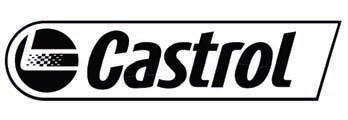 Range Rover: Topping up the oil
Range Rover: Topping up the oil
Your vehicle warranty may be invalidated if damage is caused by using oil that does not meet the required specification.
Failure to use an oil that meets the required specification could cause excessive engine wear, a build up of sludge and deposits, and increase pollution. It could also lead to engine failure.
Overfilling with oil could result in severe engine damage. Oil should be added in small quantities and the level re-checked to ensure that the engine is not overfilled.
1. Remove the oil filler cap.
2. Add oil as instructed by the dipstick display.
3. Clean up any oil spilled during topping-up.
4. Check the oil level again after 10 minutes.
It is essential to use the correct specification oil, and to ensure it is suitable for the climatic conditions in which the vehicle is to be operated.
Note: The approximate quantity of oil required to raise the level from MIN to MAX is 3.2 U.S. pints (1.5 liters).
ENGINE OIL SPECIFICATION
Use only 5W-20 oil meeting specification WSS-M2C925-A only.
Land Rover recommends;

In an emergency, if oil of the above specification is unavailable, the engine can be topped up using a maximum of 2 U.S. pints (1 liter) of 5W-20 oil meeting specification ILSACGF-4 API SM.
 Fluid level checks
Fluid level checks
NOTICE
Check the engine oil weekly. If any significant or sudden drop in oil level is
noted, seek qualified assistance.
If the message ENGINE OIL PRESSURE LOW is displayed, stop the engine as ...
 Checking the coolant level
Checking the coolant level
NOTICE
Running the engine without coolant will cause serious engine damage.
The coolant level in the expansion tank should be checked at least weekly (more
frequently in high mileage or arduo ...
See also:
Range of the sensors
General notes
The sensors must be free of dirt, ice and
slush; otherwise they may not function
correctly. Clean the sensors regularly, taking
care not to scratch or damage them.
Side view
To ...
Automatic Operation, If Equipped
AUTO: Press the air delivery mode button until this setting is selected to control
the inside temperature, air delivery, and fan speed. AUTO appears in the display
when automatic operation is active ...
Fuel System Messages
FUEL LEVEL LOW
This message displays and a chime sounds if the fuel level is low. Refuel as
soon as possible.
See Fuel Gauge and Fuel for more information.
TIGHTEN GAS CAP
This messa ...






